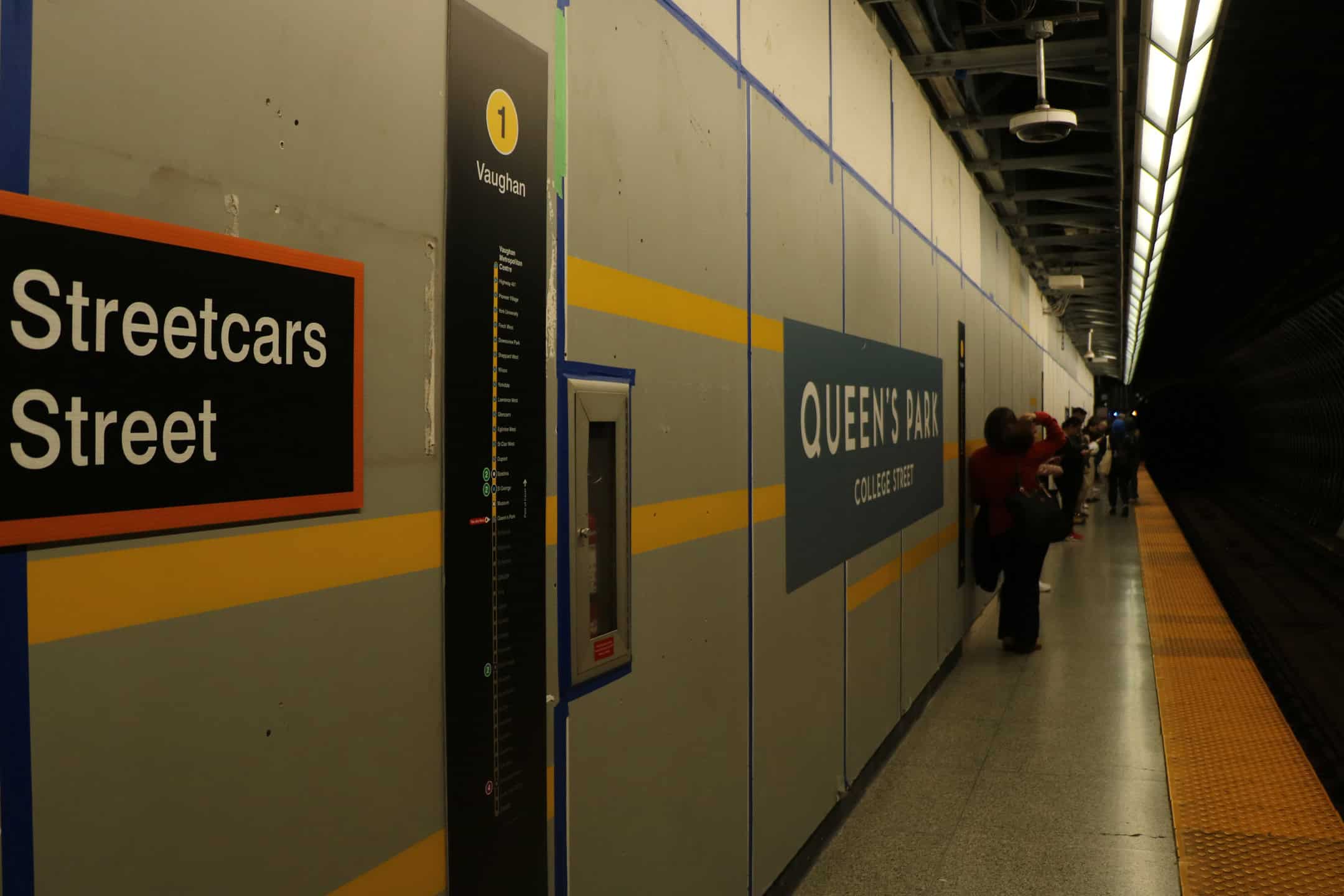Over the past year, the Toronto Transit Commission (TTC) commuters saw a number of changes to their transit from ongoing construction and weekend closures, to Reduced Speed Zones (RSZs) and concerns about safety conditions.
The Varsity spoke with UTSG commuter students about how these changes have impacted their commute on the TTC.
Ongoing construction
Since the fall of 2023, the TTC has been carrying out extensive construction at stations near the UTSG campus — including Queen’s Park Station, Museum Station, and St. Patrick Station.
The ongoing renewal program will remove outdated lighting supports and ceilings and install a new surveillance system and subway platform wall panels. The installation will begin early 2025 and continue throughout the year.
Mansi Bhatia — a second-year student studying physiology and health and disease — wrote in an email to The Varsity that the construction has made her 50-minute commute from Etobicoke even more challenging.
“I take the TTC every day… transferring from Line 2 to Line 1,” wrote Bhatia. “I’ve noticed that Queen’s Park Station signage is unclear during construction, which adds to my stress, especially when I’m already running late.”
Weekend closures
Almost every weekend, TTC commuters face significant subway closures. On September 14 and 15, the TTC suspended service over an 8.5-kilometre stretch on Line 1 between the Sheppard West and St. Clair West Stations.
Similarly, on October 12 and 13, the TTC closed Line 2 between the Victoria Park and Kennedy Stations. They closed it again on October 26 and 27. The transit agency attributes these closures to “planned track work,” but the frequency strains commuters who rely on uninterrupted weekend travel.
Raha Mirza — a second-year student studying physiology and health and disease — also wrote in an email to The Varsity about the impacts on her commute.
Mirza explained that weekend shutdowns affect her travel plans since she lives on campus during the week and relies on the TTC to get home each weekend. She added that these closures force her to leave earlier or navigate shuttle buses, disrupting her usual routine.
Reduced Speed Zones
RSZs are areas where trains are required to travel at slower speeds to minimize wear on the tracks and allow track maintenance work and upgrades. Having an RSZ in place does not mean the track is unsafe to travel on.
In May, the TTC’s geometry survey, which uses special devices to make laser-guided measurements of the rails, identified issues with tracks in need of repair not being visible during regular track inspections. Following the survey, the TTC implemented RSZs across 33 locations as of July 29 this year. The majority of these restrictions are on Line 1, with some affecting Line 2.
Second-year kinesiology student Paramjyot Kainth frequently commutes on weekends for student organization and extracurricular commitments.
“The slow zones… add time to my commute and frequently put me at risk of being late to my meetings,” wrote Kainth in an email to The Varsity. “I’ve started leaving earlier… but it would be ideal if these zones could be better managed to reduce disruptions.”
Earlier this year, TTC spokesperson Adrian Grundy told CityNews, “We’re using our planned early closures, weekend closures, and non-revenue hours to do the repairs. Given the number of RSZs, it will take some time to work through them.”
Indoor pollution
While the TTC improves its functionality and aesthetics, unresolved issues impact commuter experience, particularly for students.
A June study conducted by U of T researchers from the Faculty of Applied Science and Engineering identified friction braking — a type of braking that uses friction between a moving and a stationary part of a brake when pressed together — as a major source of indoor pollution.
“Air quality at Queen’s Park Station is definitely a concern for me, especially during rush hours,” wrote Bhatia. “It feels crowded and stuffy. I wish the TTC would improve ventilation in busy stations.”
In 2021 a report from Health Canada, the National Research Council of Canada, and U of T revealed that the TTC’s initiatives with new trains and updated braking technologies contributed to improving air quality in the subway system. Since 2022, Line 1 has been operating under Automatic Train Control, which reduces the amount of friction during the braking process.
Safety concerns
The TTC’s decision to end free public Wi-Fi at subway stations by the end of the year has raised alarms as well. The TTC cited a 65 per cent decline in use since introducing 5G cellular service, arguing that the Wi-Fi’s aging technology and security concerns warrant the change.
“Wi-Fi is a safety tool for students who want to stay connected to friends and family,” wrote Kainth. “This change will impact student commuters by making it harder to use travel time effectively by doing school work or managing other responsibilities. While data is an option, not all students have sufficient resources.”
Safety remains a concern for students. In January 2023, a first-year architecture student was a confirmed victim of a Spadina streetcar stabbing. However, reported offences against passengers have dropped by 35 per cent this year.
“Generally, I feel safe on the TTC, but I’m more cautious traveling alone late at night,” wrote Mirza. “More visible TTC staff could make things feel more secure for solo travelers.”
The TTC did not respond to The Varsity’s request for comment in time for publication.



No comments to display.